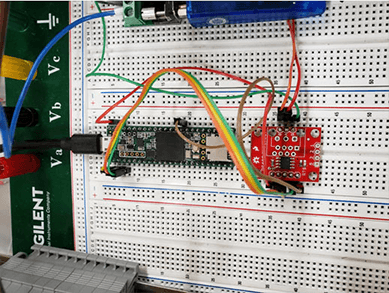Five Tips for Igniting your Product Development Cycle
Product development cycles are well defined but can vary widely from industry to industry. What is exciting is that AMD&E has developed proven ways to ignite your product development cycle. If possible, try to implement some of these five suggestions outlined below and let’s get the fire going on your product development cycle.
You probably are very familiar with the work and resources required to create and build prototypes. These prototypes can be costly and time consuming to produce and even more resource-intensive to test or validate. Actually, the test results that you do produce may not be valid due to the fact that you are testing a prototype!
Advancements in technology (hardware and software) now allow us to use digital technology and tools to reduce the hours and expenses that go into the traditional manual prototyping processes, which enables us to iterate them much faster and deliver better products. In many cases, we are able to eliminate the traditional prototyping process completely.

Figure 1 – FEA was used to predict HMMWV Frame displacementwhen subjected to loading from uneven terrain

Figure 2 – Displacement of a machine subjected to highacceleration forces
The use of Finite Element Analysis (FEA) allows us to stress test products digitally before investing into costly hardware. This allows the design to be fully optimized before manufacturing. Deflection analysis enables us to predict potential problems or flaws when subjected to loads.
Stress analysis gives us an indication as to whether or not a product will fail and how to design products so that they don't fail. Optimizing digitally can greatly reduce the number of prototypes required to prevent structural or fatigue failure.

Figure 3 – FEA predicts stresses on HMMWV Ambulance Body

Figure 4 – Thermal Analysis can predict how products react toheat loads
Thermal FEA can be used to ensure that electronics stay cool and ensure products don’t fail due to higher-than-expected temperatures. It can also be used to optimize thermal performance and heat transfer.
Tools like Magnetic Field Modeling and electromagnetic FEA can predict if and how magnets will work in a particular application. They can also ensure that stray magnetic fields are not present. This can greatly reduce product compliance time and ensure products meet the requirements set out by UL and other listing agencies.

Figure 5 - Magnetic Field Modeling

Figure 6 - Virtual Assembly
3D Digital prototyping can allow your assembly team to virtually assemble products ahead of prototype or production builds. This eliminates mistakes that may not show up until the final steps of a prototype build.
This may seem obvious, but it is definitely worth repeating the value of breadboarding vs. going directly to PCB. Breadboarding is a process that allows you to test circuits and components without the need to permanently solder or use a PCB. This means lower cost, less waste and quicker development time since breadboards are reusable and do not require the use of soldering to test electric circuit configurations.
What also allows for this process to be so appealing is that you can change out components easily to test for various configurations while greatly reducing testing time throughout the entire process. Breadboarding also allows software and firmware to be tested concurrently with hardware as it is being developed. This greatly compresses the design cycle.


Figure 8 – Mockup of an industrial control
Tip 3: Think about UI upfront
There are many ways of thinking about UI or UX when identifying problems and then solving them with smart and customer friendly design. We firmly practice what is known as the five phases of design thinking as outlined by the American Marketing Association. The five phases include:
1. Empathize - by gathering high-quality consumer understanding2. Define – create a brilliant design brief for all stakeholders
3. Ideate and Collaborate – Make sure all the right people are involved
4. Prototype – hold inspirational rapid-sketch sessions or design sprints
5. Test – get fast and productive feedback from human beings
The UI is going to be a primary interface your customers willinteract with to realize the benefits of the product/design. It is important that you keep the user in mind when developing a usableand simple UI configuration.

Figure 9 - UI of the Indigo Reactor Personal Chemistry Device

Figure 10 – Example of a consumer product withbranding and marketing
Product (features, benefits, positioning, target customers, sales channels, competition, price, etc.) are just a few of the things that we must be aware of prior to launch. The more you know, the earlier you know it and the quicker you can come to market with the right intelligence and marketing in place. It is essential that the product development process integrate marketing as a key part of the overall product design and ultimately the final product. Product Development and Marketing processes go hand in hand.


Figure 11 - Marketing and design integrated during the development stage
Tip 5: Test lightweight versions with user groups
Before bringing your product to market, it is vital that you know it will perform and deliver as designed…if not better! Building test milestones or decision gateways in your product development plan is essential. Again, all products are different, but these differences will help define the critical phases of development where testing is required for quality, accuracy, safety and performance.
It is also important to have identified your target customer(s) and have them well represented and deeply involved in the process. This is where regular testing with target users is essential in getting the feedback you need to make critical decisions as you go through the product development/marketing process. One more note, product development, and product marketing should be involved in user group testing and feedback.

Figure 12 - Multiple UI scenarios for user feedback
